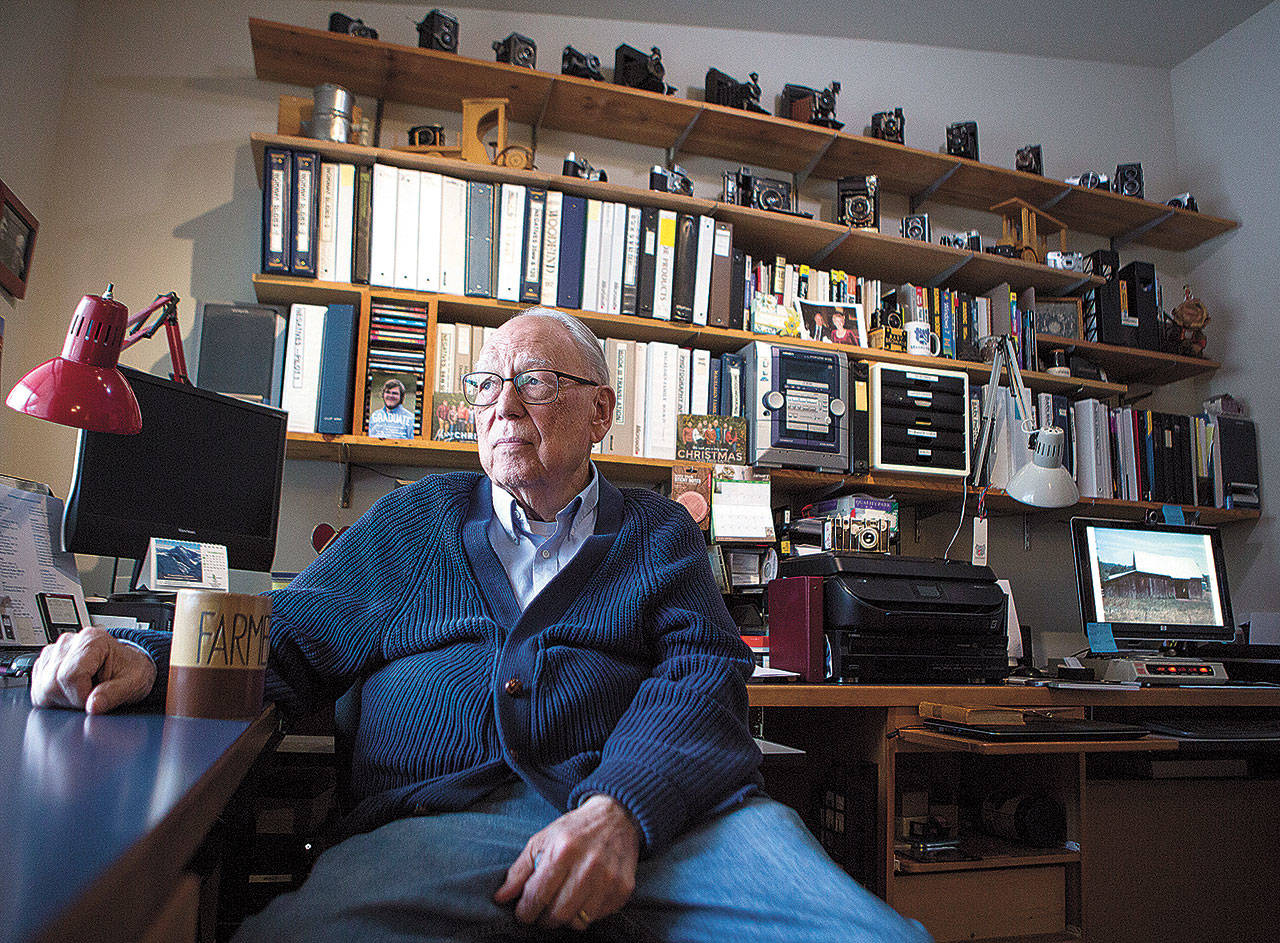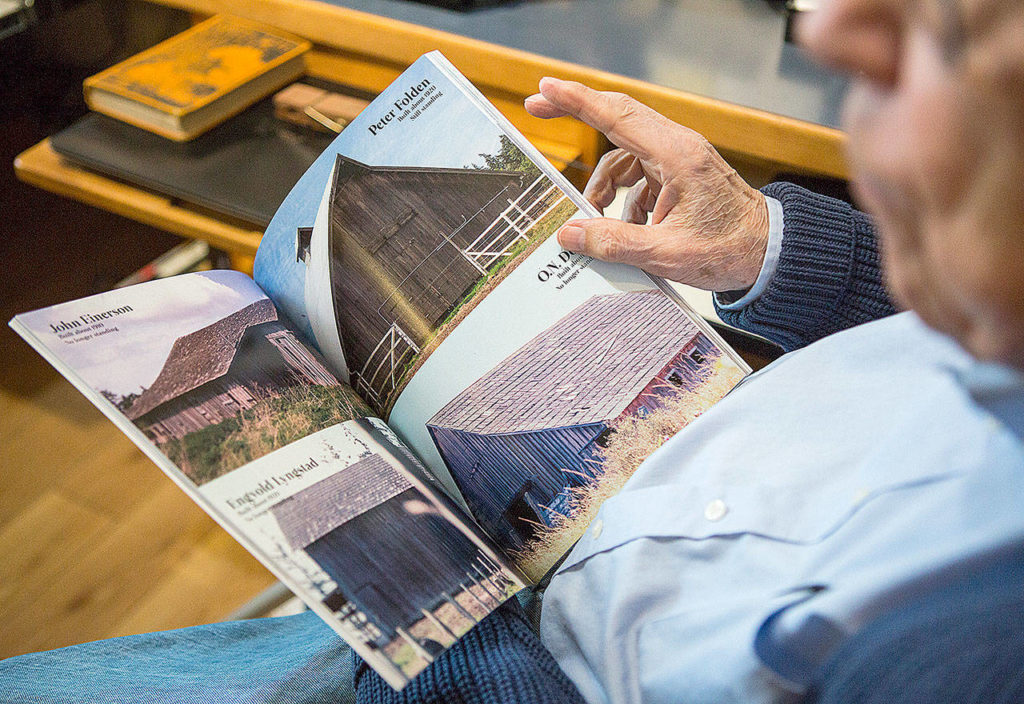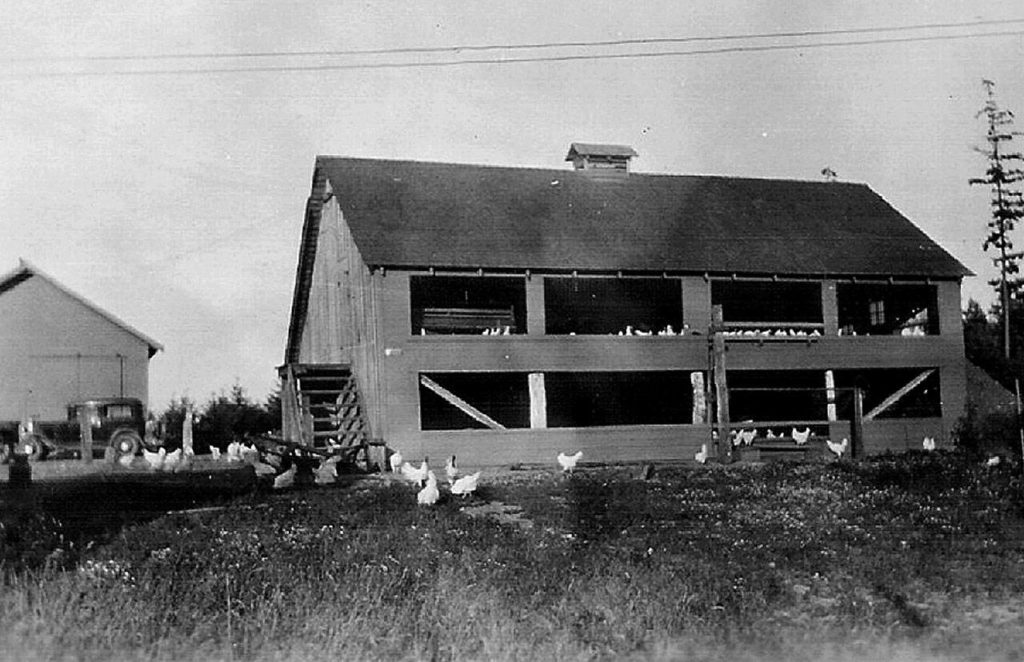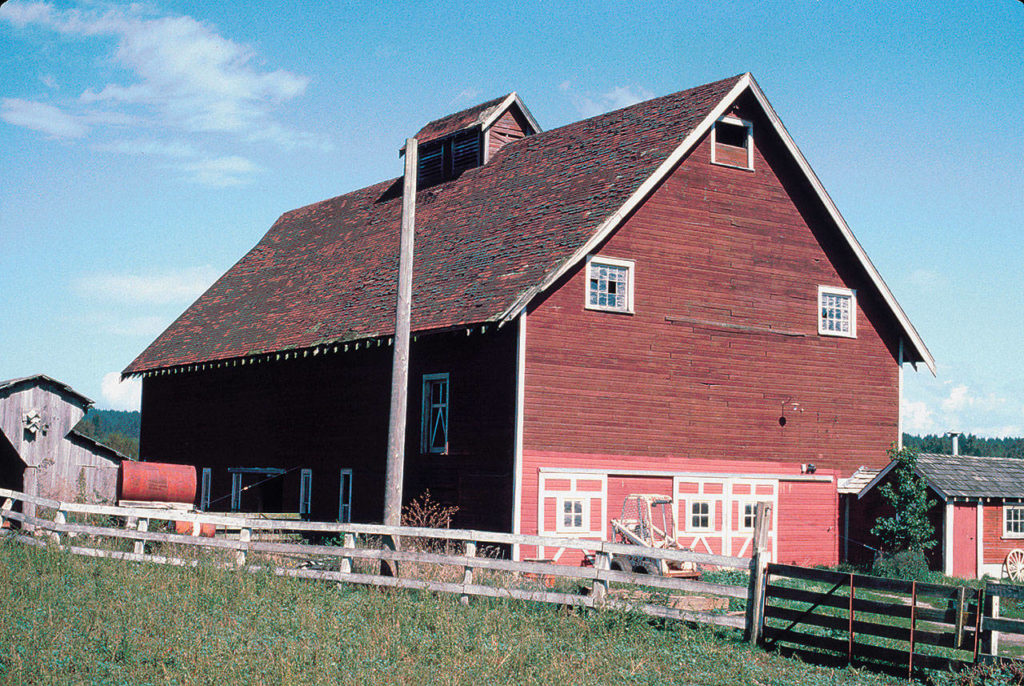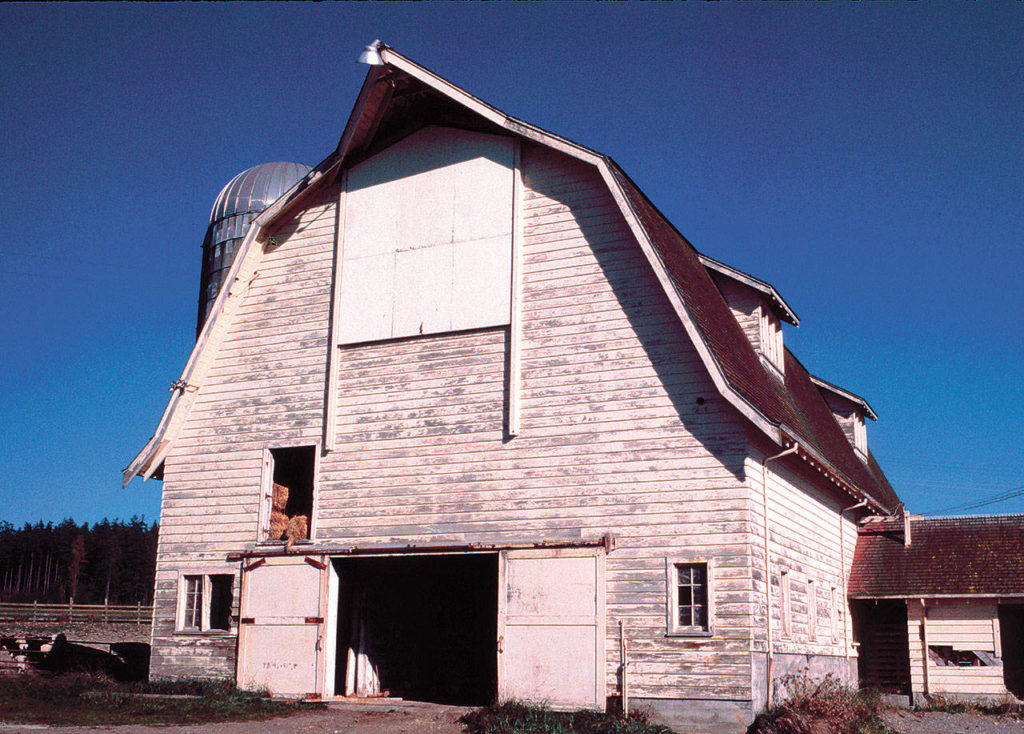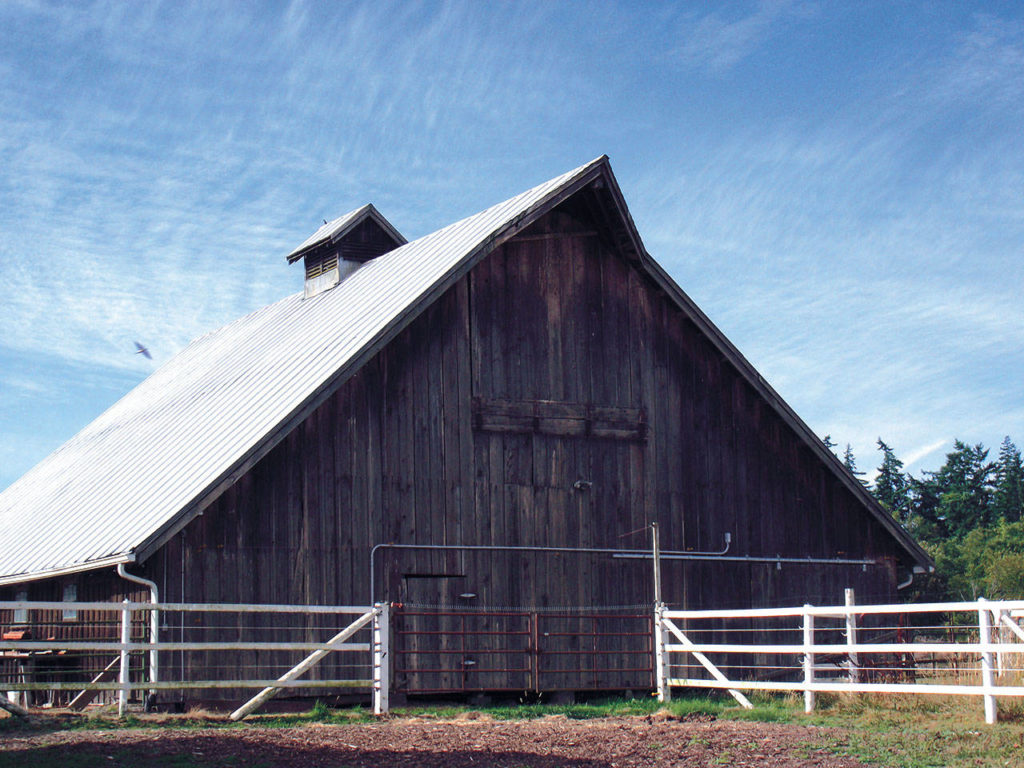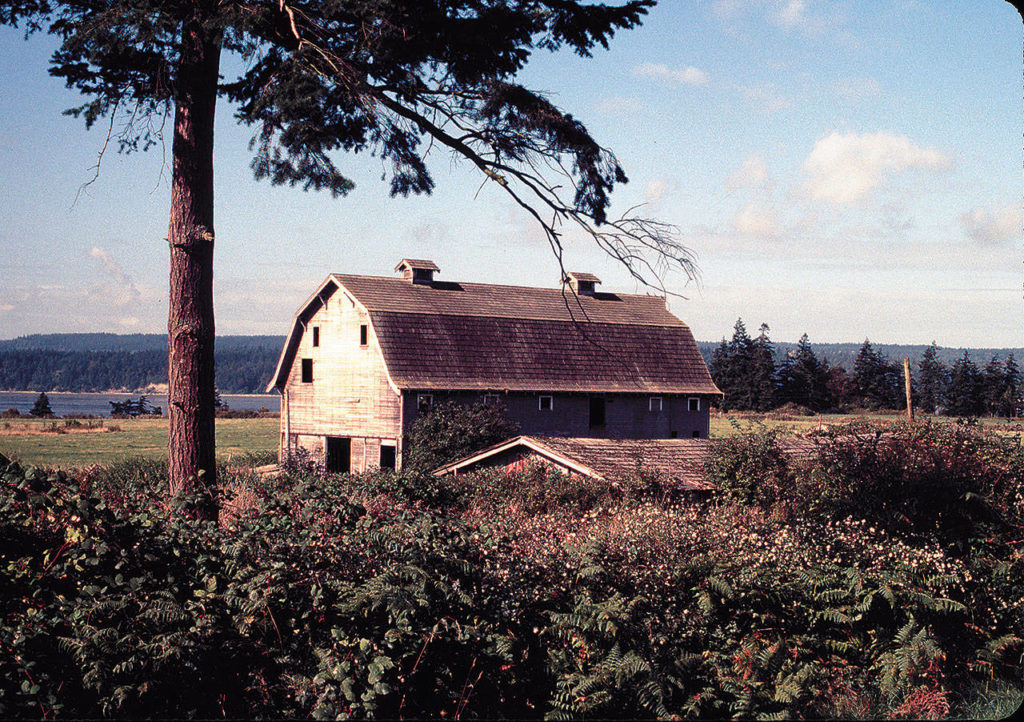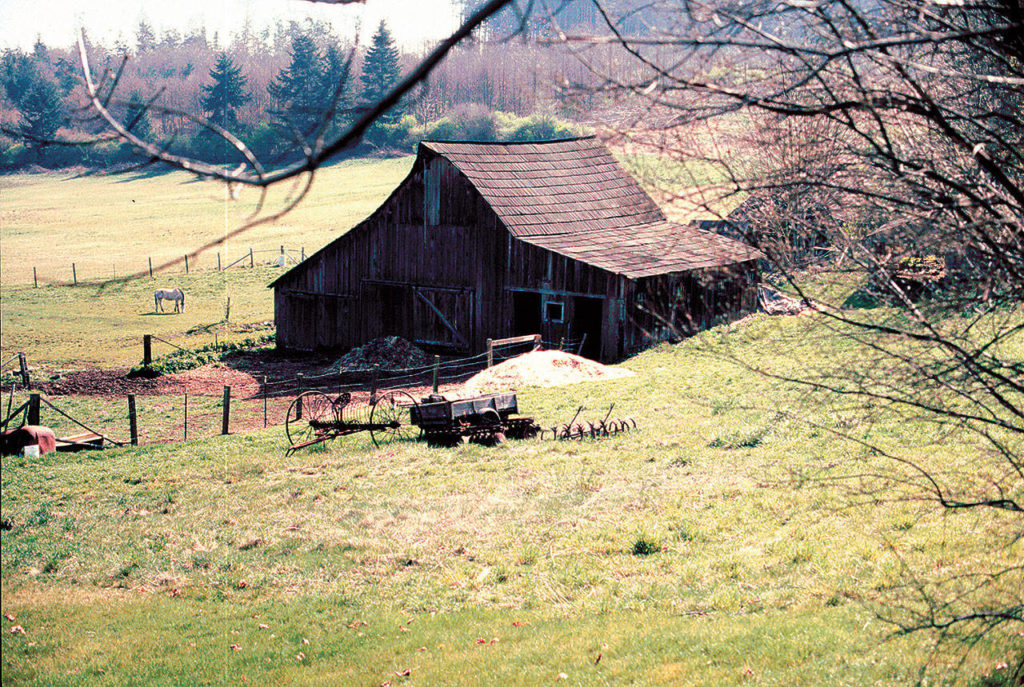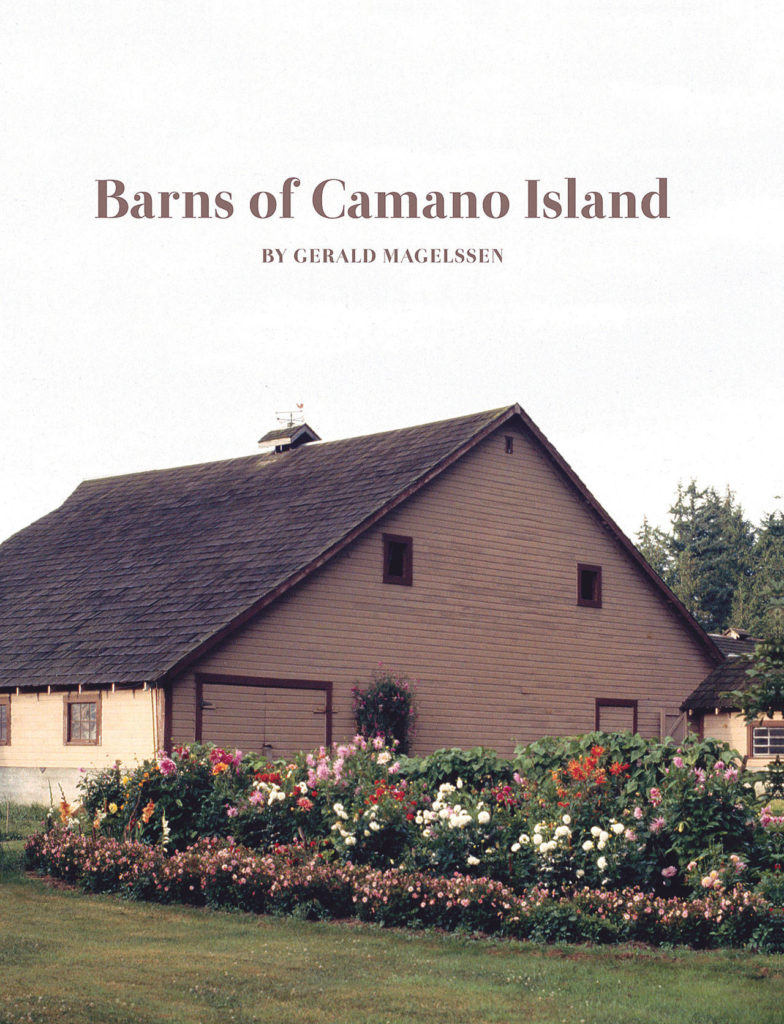By Sharon Salyer / The Herald
Since the 1970s, Arlington resident Gerald Magelssen, 85, has been photographing the barns of Camano Island, some more than 100 years old. A collection of 52 of those photographs were published in a book, “Barns of Camano Island.” The book includes several photographs from his boyhood on the family farm at Juniper Beach on the island. Over the years, he’s taken more than 500 photographs of barns on Camano Island and upwards of 2,000 farms elsewhere in Washington.
Richard Hanks, president of the Stanwood Area Historical Society, said Magelssen’s photographs document the island’s agricultural roots.
“They’re kind of representative of the family farm that has been under siege for the past couple of decades,” Hanks said. “His passion has preserved these images we’ll be able to look at for years.”
Magelssen, who has a bachelor’s and master’s degree in education, taught for 23 years as a media specialist at Shoreline Community College. He also worked as a manager in media services for Microsoft. He’s been passionate about photography since his youth, when he obtained his first camera and learned to develop and print his own photographs.
Now, his mission is to document a vanishing piece of Camano’s past.
“Barns are disappearing all over,” Magelssen said. “That’s one of the things about this book. I’m hoping I could show what it was like on Camano.”
Here, Magelssen talks about his photography career.
Why did you decide to make barns the focus of your documentary photography?
Well, if you have a farm you pretty much have to have a barn. A lot of them were still standing. I like to photograph, and ended up photographing barns. My dad went with me quite a bit in the early days. He drove a milk truck on the island. He knew all the barns. So it was good to have him with me. It was a time we could visit.
When did you start taking photographs of barns?
In the mid-1970s, because we hosted an exchange student from Germany. She wanted to sketch a barn. So I took her out to one fairly near us.
Do you remember your first camera?
Oh yeah. A Pilot Super made in Germany, single lens reflex. I was probably in Boy Scouts and I was probably in seventh grade, so I was about 13 years old. My uncle took me down to Seattle. He said, “I want you to get a good camera.” We got a camera just like he had.
Then I got a Canon, then a better Canon, and then a Nikon, and a Fuji. I’ve had five cameras.
How long did you live on Camano Island?
From the time I was born, in 1934, until I went to college, in 1952.
What kind of farm was your family’s?
Dairy. We had 10 cows. My grandfather built the barn and had some cows and cleared the land. Then my dad got the farm and he went into the chicken business and converted the barn into a chicken house.
Tell me what it was like for you growing up on the farm?
In the old days, my dad did the spring work with a horse. He and a neighbor would have coffee together, each on their own side of the fence. They would plan to be at this one spot about coffee time. They would stay with the horses, and they would visit while they had their coffee, and then take off again.
And when we had chickens, we had to take care of the chickens, morning and night. Picking the eggs.
In the summertime, people from Seattle would come up and stay at Juniper. They would come to the farm with a gallon mayonnaise jar and get fresh milk. Sometimes they would get eggs. Sometimes we would kill a chicken for them so they could have a chicken dinner. Those are not the usual farm things, probably. It was a little different living by the beach, where the people came up from Seattle.
What were family meals like?
I remember we had meals where nothing was from the store. We had meals where everything came from the farm … even the bread and sometimes if my dad had gone out fishing, we had fish, or beef from the cattle. So we were pretty self-sufficient.
What else do you remember from that time?
There’s another I remember vividly. I was an only child living on a farm. Sometimes after school, I would go home with my friends in Stanwood and stay with my grandparents and play with my classmates in Stanwood because I had no one to play with out there.
You have said that your favorite photograph from your book is the one on the cover, showing your family’s barn. Why is that?
I spent a lot of time in the barn milking cows and hauling hay and have a lot of memories of people who would come and help us haul hay.
Is your family’s farm — and the barn — still in the family?
Yes, my daughter Karen Camp and her husband are the fifth generation on the farm. It never seemed to be a place for me to settle down because of the different jobs that I had.
You went to school in Stanwood?
That was the only school around. I went to Twin City High School. There used to be Stanwood and East Stanwood. The paper was the Twin City News. There used to be two high schools. Finally, the schools consolidated. And now the whole area is consolidated into one.
How did you develop and print your own film and photos?
My darkroom was upstairs in the farmhouse. There was no water up there. So I had to carry water up the stairs. It was 1½ stories. My first picture was a rose. I still have the negative.
How much of the farming and cultural traditions remain on Camano Island?
It’s getting pretty slim. Ten percent of the island, maybe, is related to the old-time farmers. A lot of it has been lost.
Are there any new barns on Camano Island?
No, they’re more likely to fall down than for a new one to be built. The newest one is probably from 1942. I can’t think of any newer than that.
Where do you next want to go to photograph historical barns?
In the Conway area. I’ve photographed most of the Conway-area barns. And I’ve done Whidbey Island, too, a lot of Whidbey. And the barns that I’ve shot, so many are not standing any more.
Do you know of anyone who, like you, is trying to document what is left of a more rural way of life in our area?
It’s pretty hard for anybody younger than me to do something like this. They haven’t lived this life on a farm. They don’t have the appreciation that I do.
How do you feel about the way Camano Island has changed and grown, especially over the past 20 years?
It’s inevitable — there are more people and lot of change. A lot of people have new ideas. There’s one person I know who is buying up farms so they don’t build big mansions on them. They can keep the farm look on the island. It was a farming community. It would be nice if there was some of that still.
“Barns of Camano Island”
The book by Gerald Magelssen is available at barnsofcamanoisland.com for $30. Call 360-722-6666 or email farmkaren@gmail.com for more information.
Washington North Coast Magazine
This article is featured in the spring issue of Washington North Coast Magazine, a supplement of The Daily Herald. Explore Snohomish and Island counties with each quarterly magazine. Each issue is $3.99. Subscribe to receive all four editions for $14 per year. Call 425-339-3200 or go to www.washingtonnorthcoast.com for more information.
Talk to us
> Give us your news tips.
> Send us a letter to the editor.
> More Herald contact information.
